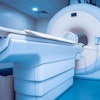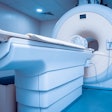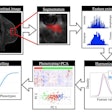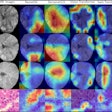As MRI suite consultants, we see our fair share of control rooms. What you may not realize is that we also see the images of Mrs. Smith's tumor and Mr. Doe's knee plastered up on the viewboxes or on the console screen. More worrisome for your next Joint Commission on Accreditation of Healthcare Organizations (JCAHO) review, that's also what many patients going to or from the scan room see.
Unfortunately, most MRI facilities predate implementation of the Health Insurance Portability and Accountability Act (HIPAA), and have significant glaring conflicts with the new act. But even more unfortunate, vendors have not changed the typical drawings they provide to client hospitals and their designers, so the problems persist, even in post-HIPAA facilities. New does not mean compliant.
Privacy issues
Quite apart from the incidental image left on the console screen, many control rooms double as reading rooms, lined with viewboxes and medical images. Additionally, when physicians use the control room for reading, they dictate their patient notes while standing in front of viewboxes. But at many sites, the control room is also the corridor through which patients pass to access the imaging suite.
Sadly, many MR control rooms are open sieves for patient information. You only need to pass through the control room (or stand next to it if the control room doesn't actually have a physical barrier separating it from patient holding/zone II) to see and hear confidential patient data.
For emergent cases, performing reads as soon as the image is available will often be necessary. So as interventional MR takes off, it would be foolish to try to ban reads and dictation close to the control room. Doing so would be counterproductive and diminish patient care. But this does not mean that reads close to the control room have to occur where patients can see or hear them.
Privacy protection measures
Here are a few strategies facilities can employ to protect patient privacy in the MRI suite:
Control the line of sight. The ability for technicians to view patients as they approach and enter the magnet room is of the utmost importance. Enabling patients to see into the control room is not critical. This one-way view can be accomplished a number of ways:
- With an obscuring glass partition between the magnet room door and the console
- With tinted glass
- With focused high levels of light along the patient's travel path into the magnet room (The higher levels of light where patients are will wash out their ability to see the contrast and detail on any images, either on the screen or on a viewbox.)
Remove patient information that is not currently being utilized. We're all captivated by the images generated by MRI, but that doesn't mean we need to treat films as fancy backlit wallpaper, illuminated to make the control room look like the bridge of the Enterprise on "Star Trek." Clear patient images from the screen, turn off viewboxes, and pull down the films.
Keep patients out of the control room. The control room is not the place to conduct prescreening questionnaires, nor is it the place to talk with them about what their scans revealed. They should only be passing through, and quickly at that.
Don't let patients overhear other patients' information. Some means of separation should be present between the control room and the patient holding areas. For patients passing through to the scan room, they should not hear snippets of the physician's dictation. Provide dictation alcoves for auditory privacy, white-noise generators that can mask soft speech, or turn on the radio. Each of these can contribute to enhanced auditory privacy.
Fortunately for existing facilities, these strategies do not require much area. In fact, a practice can probably squeeze the 15 square feet (6 square meters) needed for a dictation booth, or the 4 inches (10 centimeters), needed for a translucent window-wall out of available space.
For those of you currently involved in the planning, design, or construction of MRI suites, make sure that the designs incorporate patient privacy protections, which unfortunately are not a standard element in many vendors' typical layouts. Sadly, only a quick adaptation of this vendor "typical" is what many MRI suites get from their designers.
We're all still learning about HIPAA implementation and just how far facilities must go to protect patient privacy. Fortunately for MRI, a handful of strategies can significantly enhance the protection of patient privacy, and they have small space and minimal dollar consequences.
By Robert Junk and Tobias Gilk
AuntMinnie.com contributing writers
October 26, 2004
Reprinted from www.MRI-Planning.com by permission of the authors. If you would like more information on any aspect of MR facility design or safety, please contact Robert Junk or Tobias Gilk at Jünk Architects.
Related Reading
The fire extinguisher in your MRI suite: will it save a life or take one? September 22, 2004
What your vendor may not have told you about magnetic contamination, July 27, 2004
Universal room design can mitigate change costs, May 16, 2003
Facility-planning implications of the new MRI safety guidelines, September 9, 2002
Copyright © 2004 Jünk Architects, PC

.fFmgij6Hin.png?auto=compress%2Cformat&fit=crop&h=100&q=70&w=100)





.fFmgij6Hin.png?auto=compress%2Cformat&fit=crop&h=167&q=70&w=250)











